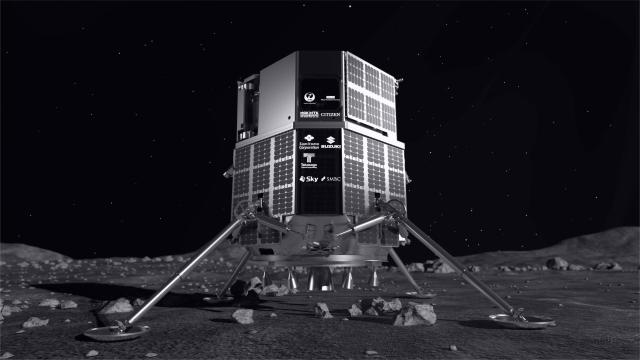Tokyo-based company ispace appears to have failed in its attempt to land its lunar lander on the surface of the Moon, which would have made it the first private mission to land on the dusty lunar surface.
The Hakuto-R Mission 1 (M1) lander was scheduled to land on the lunar surface on Tuesday at 12:40 p.m. ET. The lander was targeting a landing site at the Moon’s Atlas crater in the far northern hemisphere called Mare Frigoris, also known as the Sea of Cold.
The spacecraft began its landing sequence about an hour before the scheduled touchdown. Following its cruise phase, the spacecraft emerged from the far side of the Moon at an altitude of around 25 kilometres above the lunar surface. The M1 lander hovered above the lunar surface, slowing down to smoothly touch down after an engine cut-off. Mission control lost contact with the lander minutes before its landing time, which was expected, but ispace controllers could not reestablish contact with M1 after the expected landing time.
“We have to assume that we could not complete the landing on the lunar surface,” ispace Founder Takeshi Hakamada said during the live telecast. “Our engineers will continue to investigate the situation.”
Hakuto-R M1 launched on December 11, 2022 on board a SpaceX Falcon 9 rocket from Cape Canaveral Space Force Station in Florida. The M1 lander is the inaugural mission to ispace’s lunar exploration program, Hakuto-R, which is designed to provide a low-cost delivery service to the Moon, deploying payloads on the lunar surface.
Hakuto-R M1 was carrying both commercial and government-owned payloads to the Moon including a tiny, two-wheeled transformable robot by the Japanese space agency. The Smart Lander for Investigating Moon (SLIM) is about the size of a baseball and is designed to test techniques for future missions to the Moon on a smaller scale. Another payload that was on board the M1 lander was the Emirati-built Rashid rover, a four-wheeled rover designed to study the geology of the Moon, exploring lunar soil and dust. M1 was also carrying two commercial payloads from Canada. Canadensys Aerospace had provided a lunar camera, while Mission Control Space Services provided an AI flight computer.
The company does not seem deterred from its failed mission as ispace is currently working on its follow-up missions to the Moon. “We acquired flight data during the landing phase, that is great achievement for the future missions,” Hakamada said. “That is important to feedback what we learned form this mission to mission two and mission three.”
